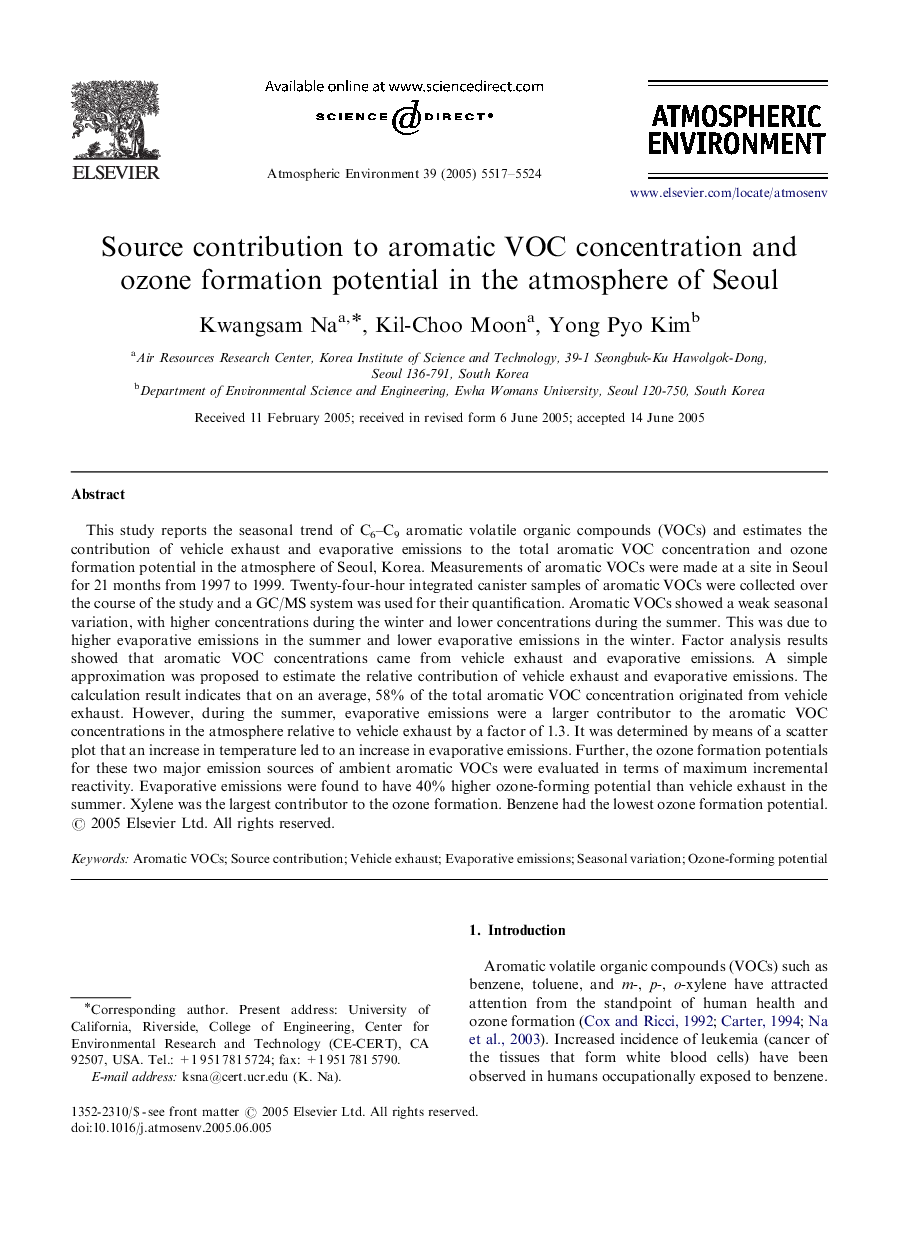| کد مقاله | کد نشریه | سال انتشار | مقاله انگلیسی | نسخه تمام متن |
|---|---|---|---|---|
| 4444855 | 1311258 | 2005 | 8 صفحه PDF | دانلود رایگان |

This study reports the seasonal trend of C6–C9 aromatic volatile organic compounds (VOCs) and estimates the contribution of vehicle exhaust and evaporative emissions to the total aromatic VOC concentration and ozone formation potential in the atmosphere of Seoul, Korea. Measurements of aromatic VOCs were made at a site in Seoul for 21 months from 1997 to 1999. Twenty-four-hour integrated canister samples of aromatic VOCs were collected over the course of the study and a GC/MS system was used for their quantification. Aromatic VOCs showed a weak seasonal variation, with higher concentrations during the winter and lower concentrations during the summer. This was due to higher evaporative emissions in the summer and lower evaporative emissions in the winter. Factor analysis results showed that aromatic VOC concentrations came from vehicle exhaust and evaporative emissions. A simple approximation was proposed to estimate the relative contribution of vehicle exhaust and evaporative emissions. The calculation result indicates that on an average, 58% of the total aromatic VOC concentration originated from vehicle exhaust. However, during the summer, evaporative emissions were a larger contributor to the aromatic VOC concentrations in the atmosphere relative to vehicle exhaust by a factor of 1.3. It was determined by means of a scatter plot that an increase in temperature led to an increase in evaporative emissions. Further, the ozone formation potentials for these two major emission sources of ambient aromatic VOCs were evaluated in terms of maximum incremental reactivity. Evaporative emissions were found to have 40% higher ozone-forming potential than vehicle exhaust in the summer. Xylene was the largest contributor to the ozone formation. Benzene had the lowest ozone formation potential.
Journal: Atmospheric Environment - Volume 39, Issue 30, September 2005, Pages 5517–5524